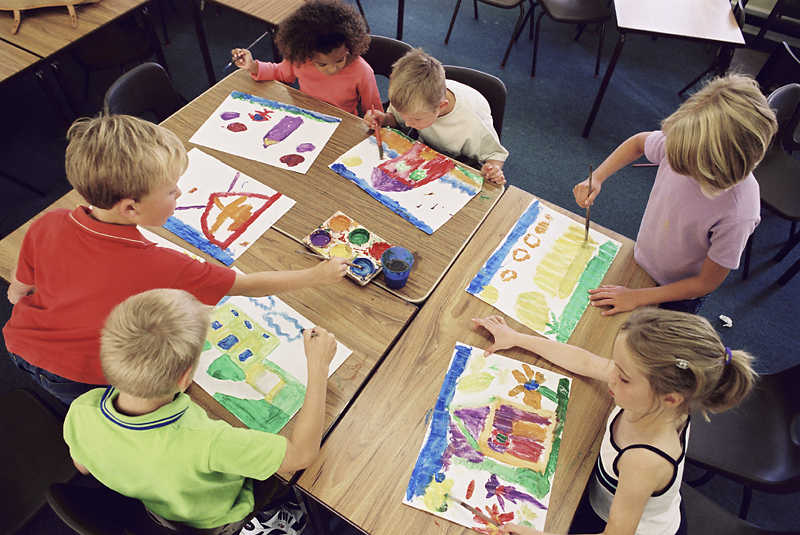The Role of Crafts in Catechesis


Did you know that the Bible begins with a craft activity?
The Creation stories in the Book of Genesis (chapters 1 and 2) explain to us how, out of the divine imagination, God crafted the heavens and the earth, the stars, the sun, the moon, the oceans, plants, and living creatures, culminating in the crafting of human beings.
Tips for Using Crafts in a Catechetical Setting1. Crafting should never take the place of actual teaching but should supplement teaching or provide participants with an outlet to express their understanding of what’s been taught.2. Impart a sense of pride in doing the project creatively and with care, telling students that artistic expression is how God created the heavens and earth and that, when we express ourselves artistically, we participate in God’s creative process.3. Complete the craft yourself to be more familiar with the time and skill involved. It will also help you decide how much of the work needs to be prepared in advance to allow students to complete the task within the allotted time, as well as to determine the age-appropriateness of the craft project.4. Before doing a craft, be sure that the concept, theme, or doctrine being taught is clearly understood by all. Then, introduce the craft activity as a way of reinforcing this message or expressing a response to the teaching. Explain the reason this particular craft has been chosen and how it connects to the lesson.5. The more complex the craft project, the more helpers or aides you will need to assist the students. Do not assume that the students will be as informed as you are about the steps of the project.6. Be sure to have all of your materials organized and readily accessible.7. Provide directions for how to complete the craft before distributing any materials or inviting the students to leave their places. Check for comprehension by asking for volunteers to summarize the directions in their own words.8. Look over the space you’ll use to avoid any distractions for the students. If possible, decorate the crafting area in the theme of the project, which provides a visual incentive for the students. This can be as simple as displaying the project you completed in advance, or including other appropriate pictures or symbols to enhance the environment.9. Consider playing appropriate music that supports the theme of the project and provides a calming effect.10. Spread newspapers around to cover table tops and to keep the work area neat and clean.11. Arrange the students in pairs or small groups at tables with an aide at each table to assist. Have a separate table set up with supplies and materials.12. Try to use a variety of materials and ideas throughout the year. Give the students freedom to create, options to choose from, and encouragement as they work.13. Be prepared to keep certain craft projects for drying, etc., until the students return to retrieve the projects later that day or at the next session. Be sure students have clearly identified which craft project belongs to them. |
Simply put, crafting is the art of creating an object with skill and careful attention to detail. Creation is nothing other than God’s craft-work. Made in the image and likeness of God, we human beings are driven to create. Crafting is a way of participating in the creative nature of God and in the Divine imagination.
Crafting has a long privileged place in catechesis. The making of crafts allows people of all ages to concretely and creatively express their understanding of the faith and their relationship with God and the Church. Art is a language that we use in catechesis to “bring the divine to the human world, to the level of the senses, then, from the spiritual insight gained from the senses and the stirring of the emotions, to raise the human world to God, to his inexpressible kingdom of mystery, beauty, and life.” (NDC 37B1).
Crafting also is an effective teaching method for those whose learning style is not primarily word-based. People who are more comfortable drawing than writing deserve opportunities to express themselves through art. Likewise, some people simply learn best when they are invited to do something.
Crafting allows those learners who are more visual, artistic, and physical to express themselves and to learn in a manner that more closely fits their learning style. Even for those whose learning style is more word-based, crafting offers an opportunity for a change of pace. Learning in general is more effective when a variety of methods are employed and when participants are actively engaged.
Finally, the Catholic faith is fundamentally sacramental—it is a faith that goes beyond words and recognizes God’s presence reflected in the things of our world. The Catholic imagination looks to the elements of creation as channels of God’s grace. Whether it be the “official” sacramental elements such as water, bread, wine, oil, and fire, or the countless other elements available to us such as rocks, seashells, acorns, pine cones, fabric, paper, flowers, wood, and yes, even pipe cleaners, the Catholic capacity for recognizing God in the physical world is unlimited.
And, of course, one more thing … crafting is fun!


